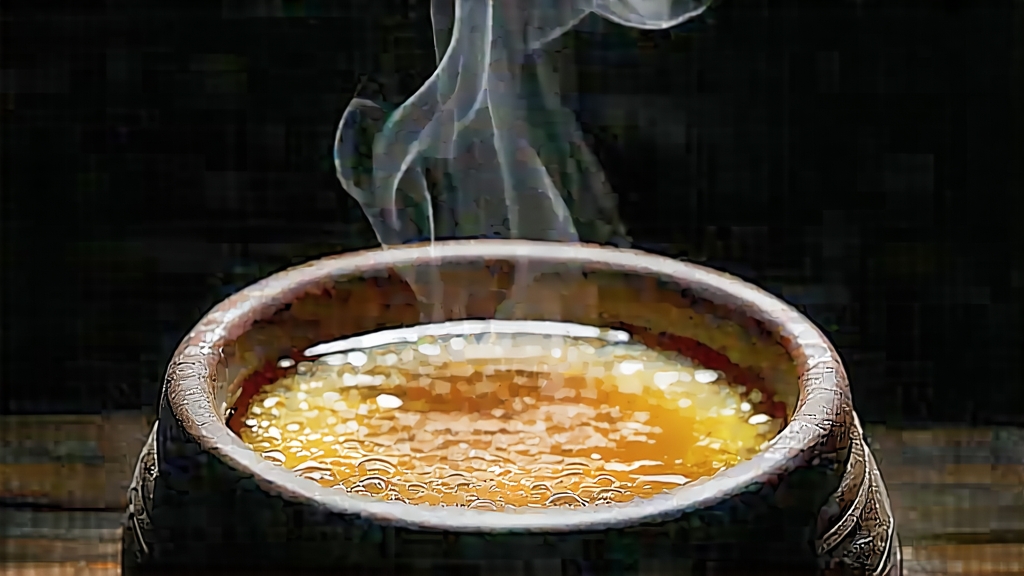
Tucked away in the misty mountains of southern Guangxi, Liu Bao tea has spent four centuries quietly perfecting the art of getting better with time. To most outsiders “dark tea” means Pu-erh, yet connoisseurs inside China rank Liu Bao as the equal—sometimes the superior—of its Yunnan cousin. Made from the same large-leaf Camellia sinensis var. assamica, Liu Bao travels a different road: one paved with humid sub-tropical air, centuries-old tea markets, and the unmistakable scent of camphor wood. The result is a liquor that glows like polished mahogany, tastes of dried longan and forest floor, and leaves the body feeling warmed, light, and inexplicably calm.
Historical footprints
The story begins during the Qing dynasty’s Kangxi reign (1662-1722) when the port of Wuzhou, at the confluence of the Xun and Gui Rivers, became the official exit point for Guangxi tea bound for Hong Kong and Southeast Asia. Coolies loaded narrow bamboo baskets—each lined with fresh banana leaves—onto flat-bottomed boats. The tea inside those baskets was Liu Bao, named after the small administrative village that coordinated the trade. On the two-week river journey the tea absorbed moisture, began to ferment, and arrived with a mellow sweetness that Malay miners and Cantonese dockworkers swore could cure dampness and hangover alike. By the late 19th century Liu Bao had become a currency in its own right: laborers in the Kinta Valley tin mines were partially paid with bricks of 1880s Liu Bao still treasured today by Malaysian collectors.
Micro-terroirs within one county
Modern Liu Bao is produced across six townships of Cangwu County, but three elevations give distinct personalities. Tea picked at 200-300 m in the limestone foothills carries cocoa-like depth and a hint of cassia; mid-slope gardens at 400-500 m yield lighter, orchid-tinged aromas; while the mist-shrouded plots above 600 m produce the most complex lots, laced with lychee sweetness and a cooling camphor finish that lingers in the throat for minutes. Unlike Pu-erh’s mountain villages, Liu Bao gardens are intercropped with cinnamon, pomelo, and native camphor trees whose roots share mycorrhizal fungi with the tea bushes, adding subtle layers to the leaf’s microbial community.
The craft: from solar withering to wet-pile revelation
Harvest takes place from late April to mid-May, when two leaves and a bud have thickened enough to survive the rigorous processing. After a brief solar withering on bamboo mats, the leaves are wok-fired at 280 °C for eight minutes—just long enough to denature enzymes while preserving thick-cell-wall pectins that later feed beneficial microbes. Rolling follows the ancient “dragon-horse” pattern: alternating forward presses and backward pulls that twist the leaf into a tight strip without breaking the surface, creating micro-fissures for oxygen to enter during aging.
What sets Liu Bao apart is its unique wet-pile fermentation, lighter and shorter than the Wo Dui of Pu-erh. Leaves are piled 60 cm high inside spotlessly clean cement troughs lined with wet gunny sacks. Workers turn the pile every 45 minutes for six hours, allowing temperature to peak at 55 °C, then spread it out to cool overnight. This controlled hydration encourages a bloom of Aspergillus niger and Blastobotrys adeninivorans—two fungi rare in other teas—that convert caffeine into the milder stimulant theacrine and produce the tea’s signature “betel-nut” note. After 36 hours the leaves have turned chestnut-brown, their bitterness replaced by a date-like sweetness.
Basket aging: where time becomes flavor
The semi-fermented tea is steamed for 90 seconds, then packed by barefoot artisans into cylindrical bamboo baskets woven from three-year-old mao zhu. Each basket holds exactly 50 kg; the artisan’s heel compresses the tea just enough to leave air channels for micro-aerobic aging. A final banana-leaf lining acts as both humidifier and anti-mold membrane. These baskets are stacked seven high in riverside warehouses whose clay-tile roofs breathe with the seasons. For the first three years the tea “sweats,” losing grassy volatiles and gaining plum-skin acidity. Years 4-10 see